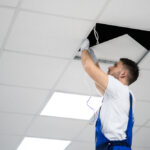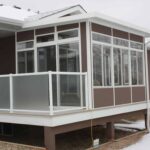How Are Noise Barrier Sheets Tested and Certified for Performance and Safety
If you’re building a bustling highway in the middle of a city or constructing a serene neighbourhood near an airport, managing noise pollution is a significant challenge. One way engineers tackle this issue is through the use of noise barrier sheets. But how do we know these sheets are up to par?
Understanding the rigorous certification process behind these products is essential.
Introduction to Noise Barrier Sheets
First, a quick primer. Noise barrier sheets are part of a broader category of products designed to minimise sound transmission between spaces. They are often used in architectural, building construction, and transportation sectors where noise reduction and acoustical performance are critical.
These flexible, dense barriers are capable of withstanding diverse environmental conditions while significantly muffling the noise that hits them.
Noise barriers are an investment in the quality of life and environmental health of a community. Through certification, stakeholders can trust that these products adhere to standards that ensure they function as advertised.
Common Testing Methods for Noise Barrier Sheets
There are several testing methods that manufacturers use to assess the performance of noise barrier sheets. One of the most crucial is Transmission Loss Testing, which measures the effectiveness of a barrier over a range of sound frequencies.
Another is Flammability Testing to assess how a noise barrier sheet withstands potential fire hazards. Additionally, Environmental Chamber Testing is used to mimic exposure to various weather conditions over time.
The effectiveness of noise barriers is typically measured by two crucial metrics: Sound Transmission Class (STC) and Outdoor-Indoor Transmission Class (OITC). STC measures airborne sound insulation performance, while OITC focuses on the performance of facades against outdoor noise sources like traffic. Both values must meet or exceed regulatory requirements to be considered effective.
Certification Processes and Standards
The certification process typically involves independent, third-party testing to ensure unbiased results. There are regional and international standards that each test must adhere to, such as those set forth by the ASTM International or the International Standards Organisation (ISO).
Certifications may also be required by local or state authorities, depending on the intended use of the barrier.
Benefits of Using Certified Noise Barrier Sheets
The advantages of investing in certified noise barrier sheets are clear. Not only do they guarantee performance, but they can also potentially contribute to LEED certification and other environmental accolades that showcase a project’s commitment to sustainability and community well-being.
Additionally, certified sheets can help reduce liability risks for manufacturers and project owners.
Selection and Installation Considerations
When selecting noise barrier sheets for a project, several factors come into play to ensure optimal performance and compatibility with the surrounding environment. Material composition, thickness, and surface texture are key determinants of a barrier’s effectiveness.
Additionally, correct installation is critical. Barriers must be properly mounted and sealed to prevent sound leakage. Consulting with experts during the selection and installation process can lead to more effective noise mitigation solutions.
Maintenance and Lifespan
Maintaining noise barrier sheets is essential for sustaining their performance over time. Regular inspections can identify wear and tear or damage from environmental factors, while routine cleaning can prevent buildup that might reduce sound insulation.
Understanding the expected lifespan of the materials used in noise barrier sheets helps in planning for replacements or upgrades as part of long-term infrastructure maintenance.
Conclusion and Future Outlook
A commitment to using certified noise barrier sheets is a critical step in creating a quieter, more livable environment. The science of sound mitigation continues to evolve, and with it, so do the standards and certification processes. Staying educated on these developments will be essential for construction and environmental professionals who are dedicated to quality and the public interest.
Following these steps, you can gain an understanding of what it takes for a noise barrier sheet to earn its stripes. It’s a fascinating process that melds engineering precision with regulatory compliance, all to ensure that the little things, like the chirping of birds or the laughter of children playing, can still find their way to our ears.






